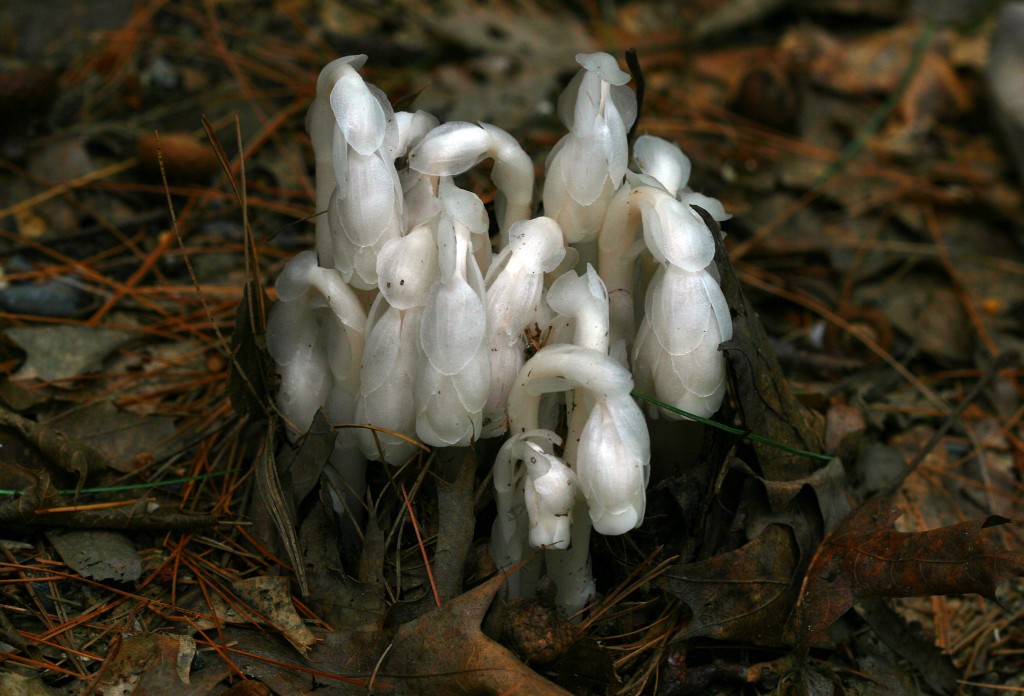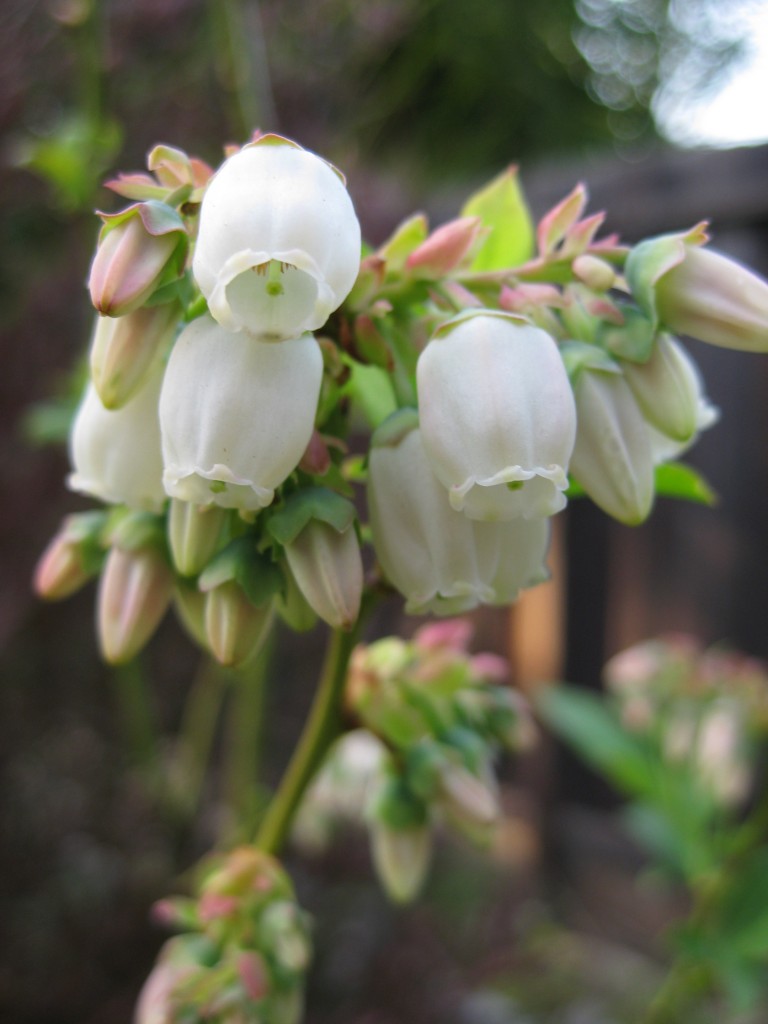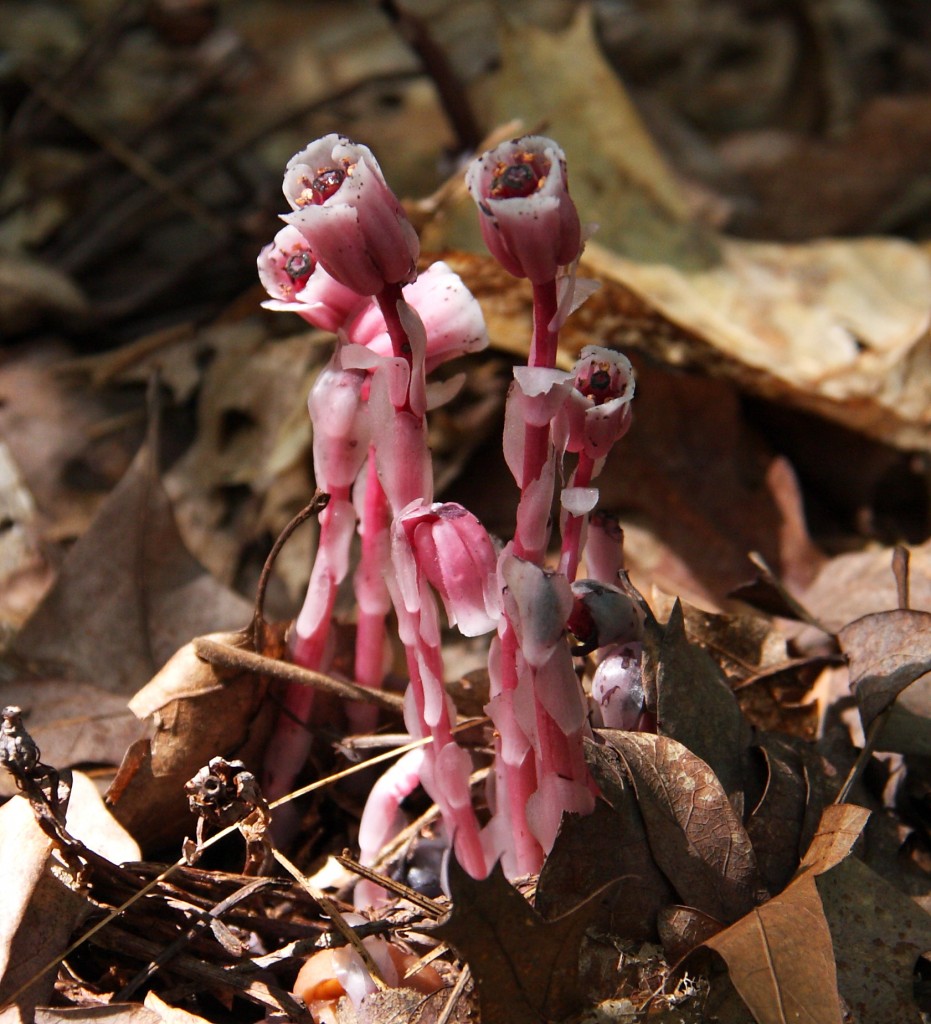Since any parasites you may be hosting are at this moment getting their daily fix of you, why not get your daily fix of parasites? It turns out that in honor of the International Year of Biodiversity, a parasitologist at the American Museum of Natural History is hosting a Parasite of the Day blog — that’s right! One parasite a day for the entire year. By the end you’ll be totally sucked dry.
The one that blew me away was the parasite that has evidently converted itself (or rather, has been converted by evolution) from a snail into a worm-shaped set of gonads, much like adult tapeworms (or guinea worms!). The chief way scientists know it is a gastropod is its larvae — which still appear as “tiny, delicate snails.” Evolution: Totally Frickin’ Crazy/Awesome.
Still, just to prove that not all parasites are insects, worms, worm wannabes, or politicians, here is a plant parasite that I used to stumble upon all the time in the murky gloom while mucking around upstate New York forests hunting mushrooms and other oddities: Monotropa uniflora, also called Indian Pipe.

Monotropa uniflora (once-turned single flower, I think), also called Indian Pipe, Ghost Flower or (most luridly) Corpse Flower.
You see, parasitism can happen to anyone — even a nice flowering plant like Monotropa. Its flowers are the bulbs at the end of the curled-over stems, above. It is usually ghostly white or sometimes pink (though I’ve never personally seen a pink one) because it has no more need of chlorophyll, the chemical that allows most plants to convert sunlight into food. It has found a way to parasitize the fungi collectively called mycorrhizae (miko-rye’-zee) that are cooperative with nearly all trees (and, in fact, nearly all plants!).
Since the mycorrhizae get most of their food from the tree they are helping support, this little flower is in effect parasitizing the trees it grows under. Its proximal victims tend to be mychorrhizal fungi in the family Russulaceae (Roo’-syu-lay-see-ay or Russ’-you-lay-see-ay), which contains the prolific genera Lactarius and Russula. If you’ve ever been in the woods odds are you’ve seen the mushroom fruits of these fungi. Russula sp. tend to make very common but mostly inedible chalky white mushrooms with red caps and white spores that frustrate North American ‘shroomers looking for better, more edible fare. In Russia, they pickle and eat some. No accounting for taste (or cast-iron stomachs), I suppose.
Monotropa itself is in the blueberry or heath family, also called Ericaceae (Eric-ay’-see-ay, which you can see placed among its relatives here). This family contains many familiar berries, including blueberries, cranberries, lingonberries, and huckleberries (alert Val Kilmer). Members of this family usually prefer the acidic soils of peat and bogs often have “urn-shaped” flowers in which the petals are all fused (botanists would say the corolla, or whorl of petals, is united), which you can see in these blueberry flowers.

Vaccinum (blueberry) flowers. Photo by Thomas Kriese. Creative Commons Attribution 2.0 Generic License. Click image for link.
Though the petals of Monotropa aren’t united, they are clearly urn shaped, as you can see more clearly in this photo of the pink variant.

Note the bright orange pollen on the stamens around the dark-colored pistil, the tube that leads to the ovaries below. Photo by Magellan nh, Creative Commons Attribution 3.0 Unported License. Click image for link.
Since I moved out west I have not seen M. uniflora, though it allegedly does occur here. On the other hand, I see two other ghostly-pink parasitic plants all the time — pinedrops, also in the heath family, and spotted coralroot, an orchid (which also parasitizes mushrooms in the Russula family).
I seem to have written my way into an unplanned series on parasites. Let’s see if I can write my way out of it next time. Hmmm. I’m sensing slime molds in our future . . .
POTD discovered via The Loom.


{ 2 trackbacks }
{ 3 comments… read them below or add one }
these are not “corpse” plants, and there really isn’t anything corpse like. Amorphophallus titanum is the real corpse plant, belonging to the Araceae family.
If you do a little research online you’ll find they’re sometimes referred to as “corpse” plants.
http://en.wikipedia.org/wiki/Monotropa_uniflora
http://www.fcps.edu/islandcreekes/ecology/indian_pipe.htm
http://www.flickr.com/photos/warrenlynn/2757248850/
It’s not uncommon for several different species, even from wildly different places on the family tree, to have the same common name. That’s why Linnaeus invented binomial nomenclature. That said, I personally have never called them anything other than “Indian Pipe”.
A nice and slightly odd looking plant, At first I thought they were some sort of wild orchid LOL ;)